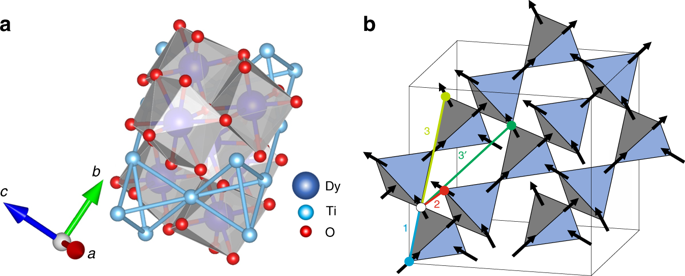当前位置:
X-MOL 学术
›
Nat. Commun.
›
论文详情
Our official English website, www.x-mol.net, welcomes your
feedback! (Note: you will need to create a separate account there.)
Machine-learning-assisted insight into spin ice Dy2Ti2O7.
Nature Communications ( IF 14.7 ) Pub Date : 2020-02-14 , DOI: 10.1038/s41467-020-14660-y Anjana M Samarakoon 1 , Kipton Barros 2 , Ying Wai Li 3 , Markus Eisenbach 3, 4 , Qiang Zhang 1, 5 , Feng Ye 1 , V Sharma 6 , Z L Dun 6 , Haidong Zhou 6 , Santiago A Grigera 7, 8 , Cristian D Batista 1, 6 , D Alan Tennant 4
Nature Communications ( IF 14.7 ) Pub Date : 2020-02-14 , DOI: 10.1038/s41467-020-14660-y Anjana M Samarakoon 1 , Kipton Barros 2 , Ying Wai Li 3 , Markus Eisenbach 3, 4 , Qiang Zhang 1, 5 , Feng Ye 1 , V Sharma 6 , Z L Dun 6 , Haidong Zhou 6 , Santiago A Grigera 7, 8 , Cristian D Batista 1, 6 , D Alan Tennant 4
Affiliation

|
Complex behavior poses challenges in extracting models from experiment. An example is spin liquid formation in frustrated magnets like Dy2Ti2O7. Understanding has been hindered by issues including disorder, glass formation, and interpretation of scattering data. Here, we use an automated capability to extract model Hamiltonians from data, and to identify different magnetic regimes. This involves training an autoencoder to learn a compressed representation of three-dimensional diffuse scattering, over a wide range of spin Hamiltonians. The autoencoder finds optimal matches according to scattering and heat capacity data and provides confidence intervals. Validation tests indicate that our optimal Hamiltonian accurately predicts temperature and field dependence of both magnetic structure and magnetization, as well as glass formation and irreversibility in Dy2Ti2O7. The autoencoder can also categorize different magnetic behaviors and eliminate background noise and artifacts in raw data. Our methodology is readily applicable to other materials and types of scattering problems.
中文翻译:

机器学习辅助的对自旋冰Dy2Ti2O7的洞察。
复杂的行为给从实验中提取模型带来了挑战。一个示例是在诸如Dy2Ti2O7之类的受挫磁体中形成自旋液体。包括无序,玻璃形成和散射数据解释在内的问题阻碍了人们的理解。在这里,我们使用自动功能从数据中提取模型哈密顿量,并识别出不同的磁态。这涉及训练自动编码器,以学习在广泛的自旋哈密顿量上的三维漫散射的压缩表示。自动编码器根据散射和热容量数据找到最佳匹配,并提供置信区间。验证测试表明,我们的最佳哈密顿量可准确预测磁性结构和磁化强度对温度和磁场的依赖性,以及Dy2Ti2O7中的玻璃形成和不可逆性。自动编码器还可以对不同的磁行为进行分类,并消除原始数据中的背景噪声和伪影。我们的方法很容易适用于其他材料和类型的散射问题。
更新日期:2020-02-14
中文翻译:

机器学习辅助的对自旋冰Dy2Ti2O7的洞察。
复杂的行为给从实验中提取模型带来了挑战。一个示例是在诸如Dy2Ti2O7之类的受挫磁体中形成自旋液体。包括无序,玻璃形成和散射数据解释在内的问题阻碍了人们的理解。在这里,我们使用自动功能从数据中提取模型哈密顿量,并识别出不同的磁态。这涉及训练自动编码器,以学习在广泛的自旋哈密顿量上的三维漫散射的压缩表示。自动编码器根据散射和热容量数据找到最佳匹配,并提供置信区间。验证测试表明,我们的最佳哈密顿量可准确预测磁性结构和磁化强度对温度和磁场的依赖性,以及Dy2Ti2O7中的玻璃形成和不可逆性。自动编码器还可以对不同的磁行为进行分类,并消除原始数据中的背景噪声和伪影。我们的方法很容易适用于其他材料和类型的散射问题。











































 京公网安备 11010802027423号
京公网安备 11010802027423号